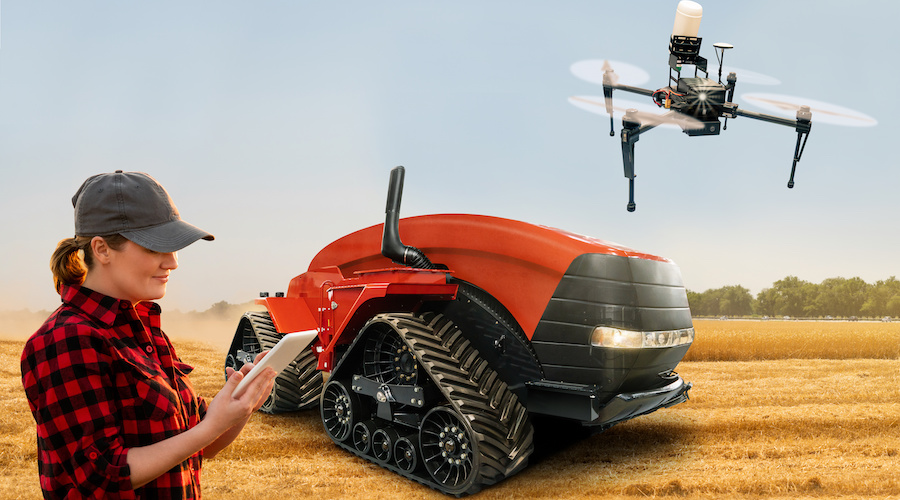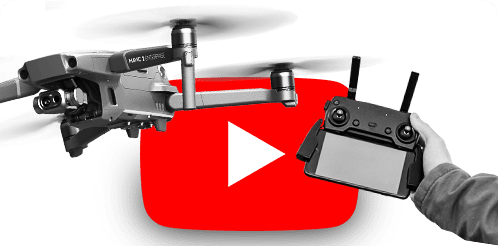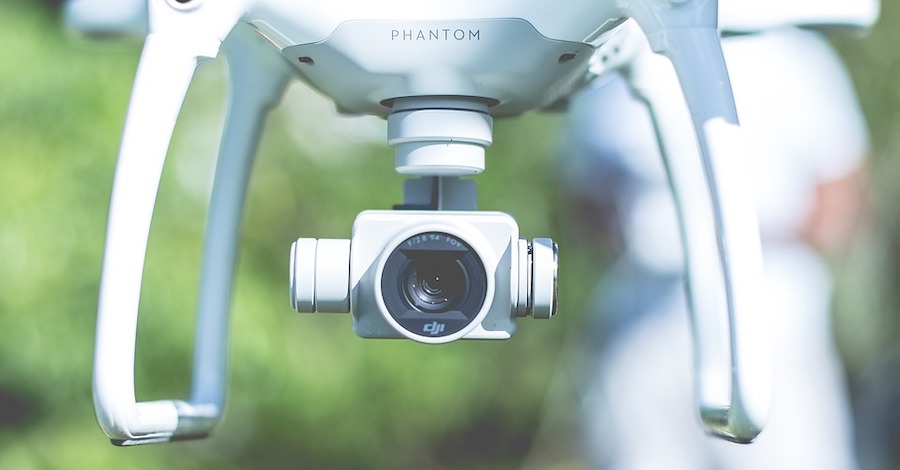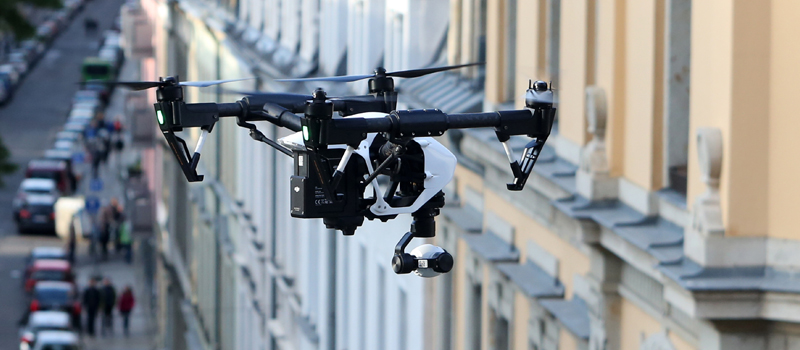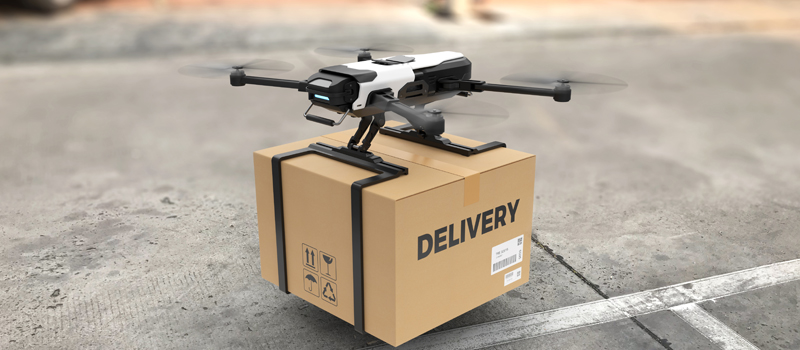-
Autonomous vs. automated
-
The different levels of drone autonomy
- Level 0 – No autonomy
- Drone News Update
- Level 1 – Low autonomy
- Level 2 – Partial autonomy
- Level 3 – Conditional autonomy
- Level 4 – High autonomy
- Level 5 – Full autonomy
- Notable drones that demonstrate high levels of autonomy
- DJI Mavic Air 2
- Skydio 2
- DJI drones with Litchi
-
Will drones ever achieve true autonomy?
- Development of foolproof obstacle avoidance
- Development of more advanced decision-making abilities
- Unmanned traffic management system
- American Manufacturer Freefly Talks New Product & Drone Ban - Matt Isenbarger - PiXL Drone Show #82
- Final thoughts
Automation is a trend that can be seen in just about any technological field. By removing the need for manual input, the idea is to make industrial and commercial processes faster, more reliable, and free from the limitations of human judgment. We’ve already seen this in the way that CNC machines have taken over the manufacturing industry and in how self-driving cars have been constantly touted as the future of personal transportation.
Automation has also been at the forefront of drone development. How do we define autonomous drone flight and is there really a drone that can operate autonomously?
Autonomous vs. automated
The word “autonomous” gets thrown around a lot in the world of drones, to a degree that has rendered it interchangeable with “automated.” However, there are key distinctions between the two terms that we need to establish.
Automated processes are easy to define because we see them around all the time. In an automated process, an operator decides on the course of action for any equipment. This process is then done automatically using an array of sensors, timers, motors, and other electrical components. Although this process can proceed with no further user input, the user can step in at any point to tweak with the process or to halt it completely.
Whether we like it or not, automation is already a part of our everyday lives. From microwaves that turn off after one minute to smartphones that automatically connect to an available Wi-Fi network, there is no question that automation has saved us a lot of precious time and effort. On a grander scale, most industrial processes can proceed automatically after an ample amount of time spent on setting the equipment up and programming it.
Autonomy is a whole other concept. An autonomous system can make decisions without user input. This is possible through an artificial intelligence (AI) system that can take inputs from sensors and use those as bases for decision-making. With modern technology, this decision-making process no longer needs to be confined to an algorithm that the machine follows. Instead, modern machines can “learn” from their environment and adapt to changing situations.
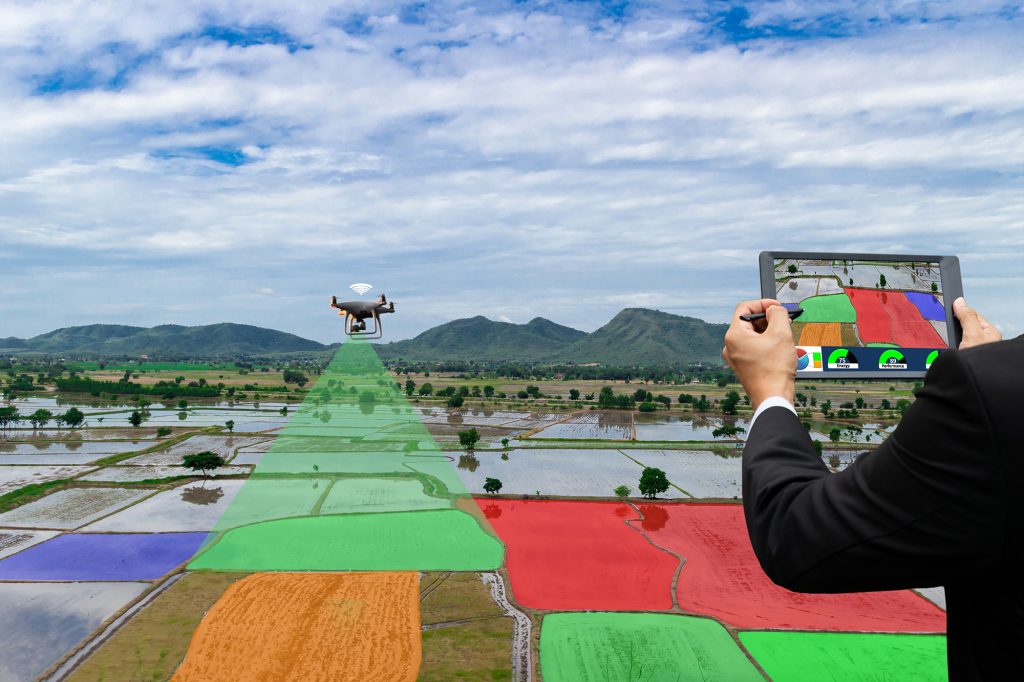
The different levels of drone autonomy
In many cases, drone manufacturers talk about “autonomous” features when they are really talking about “automated” systems. However, it should be noted that this matter does not need to be one or the other.
Instead of treating autonomy and automation as two completely different states of technology, they can be thought of instead as different levels of an “autonomy spectrum.” By adding more and more elements of automation, a technology comes closer to achieving full autonomy. To demonstrate this concept, let us attempt to apply the five levels of autonomy developed by the automotive industry to drones.
Level 0 – No autonomy
Under this model, all drone flight functions need to be controlled by the pilot. This is rare in today’s landscape of drone technology. Save for customized racing drones that are built by pilots from scratch, there are virtually no drones that are available commercially that have no autonomy whatsoever.
Level 1 – Low autonomy
There are autonomous systems that take over some flight functions, but the pilot remains in full control. Noteworthy examples include toy drones that have six-axis gyro sensors to aid in flight stabilization.
Level 2 – Partial autonomy
Multiple autonomous systems are running, but the pilot remains in full control. More advanced mini-drones can be classified under this model. Using a combination of gyro sensors, accelerometers, and GPS receivers, these drones can maintain an “Altitude Hold” without needing any pilot input. However, all their movements still have to be done by the pilot manually.
Level 3 – Conditional autonomy
The drone can operate autonomously under certain conditions. A good example of drones at this level would be those that have built-in camera modes and flight modes. All a drone pilot needs to do is to select a subject or a destination and let the drone can take complete control. Outside of these modes, however, the drone still has to be operated manually. These modes also don’t demonstrate any decision-making capabilities.
Level 4 – High autonomy
The drone can operate autonomously most of the time, and the pilot only needs to interrupt if necessary. This is the level at which top drone brands are competing in for the race to develop more autonomous drones.
Notable examples of features that demonstrate Level 4 autonomy are automatic subject tracking features and anti-obstacle avoidance systems. Through the combination of these features, a drone can automatically fly to follow a subject that they have identified either through GPS or visual sensors.
In more modern drones, AI-aided decision making plays a role in allowing drones to formulate the best route to follow to keep track of their subjects. This takes into consideration the presence of obstacles, the speed of the subject, and the forecasted trajectory of movement of the subject.
It can be argued that subject tracking obstacle avoidance drones are only somewhere between Level 3 and 4. After all, these features do not take over the entire operations of the drone, and instead are only activated when necessary. There is still a lot of user oversight, especially since they have to be the ones to manually designate a subject for the drone to follow.
Level 5 – Full autonomy
A fully autonomous drone can operate with no direct user input. No such drone exists right now, but the idea is to have drones that know when they have to be deployed and can proceed to operations without any user input. There will also be an element of learning, allowing the drone to change its methods and algorithms based on input from its environment.
With a fully autonomous drone, all phases of the operations from planning to execution can be done by the drone independent of pilot input. To attain this level of automation, there are technological and legislative barriers to overcome.
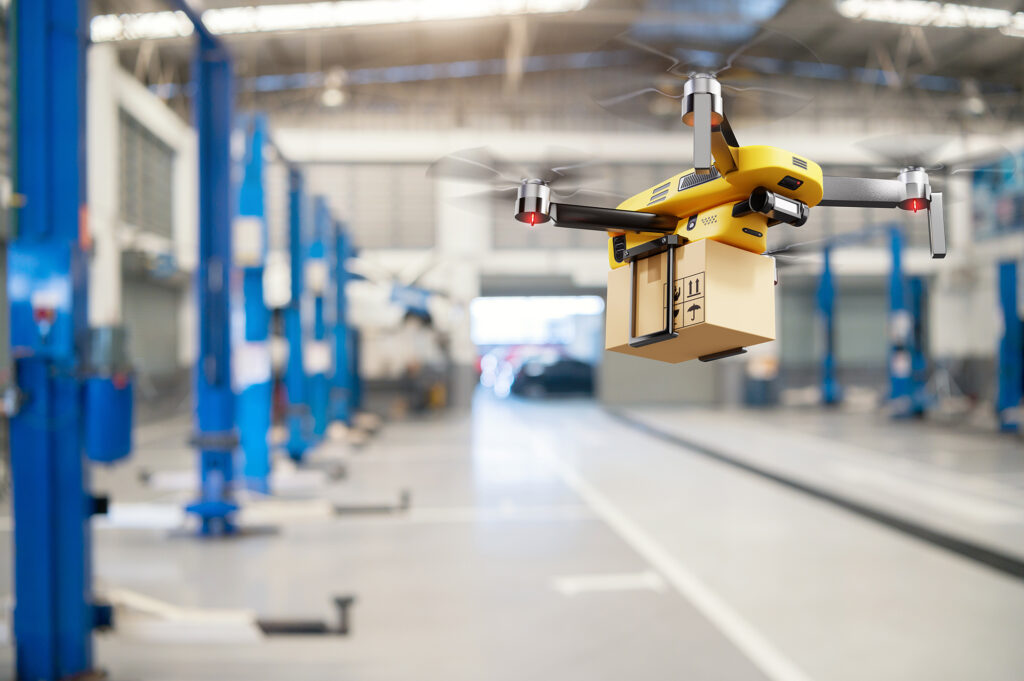
Notable drones that demonstrate high levels of autonomy
To demonstrate just how far drone technology has come in terms of autonomy, here’s a list of some of the models that have been at the forefront of pushing this technology. As we’ve mentioned, there are a LOT of drones that have overcome the Level 2 and 3 barriers. We’re no longer interested in those. Instead, we’re focusing on models that come close to perfecting Level 4.
DJI Mavic Air 2
Released just a few months ago, the Mavic Air 2 is the latest addition to DJI’s super-popular line of Mavic ultra-portable drones. Light, compact, and inexpensive, we can expect the Mavic Air 2 to be similarly successful or even more successful than its predecessor, the original Mavic Air.
On top of a high-quality camera that can shoot 4K videos at 60 fps, one of the more unique features of the Mavic Air 2 is the use of the new Advanced Pilot Assistance System (APAS) 3.0 technology. This feature uses 3D scanning and modeling technology, allowing the Mavic Air 2 to identify obstacles in its surroundings and make smart decisions to avoid them.
Through this obstacle avoidance system (arguably the best among the DJI drones), the Mavic Air 2 performs its autonomous camera modes better. One of these is the FocusTrack feature, essentially an upgraded version of the signature ActiveTrack that has been a staple of older DJI drones.
With this combination, the Mavic Air 2 can follow a subject visually while avoiding obstacles. An AI-aided process projects a predicted trajectory of the subject being tracked, allowing the drone to attempt to follow it even if it becomes visually obscured.
Skydio 2
The Skydio 2 is one of the most unique drones available today. This is because it’s not designed to be operated like you would a normal drone. Instead, its primary function is to track a subject while flying autonomously.
Skydio already made waves back when they launched the R1. With an array of six hemispherical cameras, the Skydio R1 was the first commercially available drone dedicated to subject tracking. The technology behind the drone was called “Voxel View” which was a really fancy way to say that it created a 3D model of its environment through images collected by the six cameras.
The Skydio 2 merely refined and improved on the techniques that have been established by the R1. At the heart of the Skydio 2 is a powerful NVIDIA Tegra TX2 processor that generates models from the data collected by its six 4K navigation cameras.
Just about every component of the Skydio 2 was designed in the service of its cameras. After all, both the drone’s obstacle avoidance and subject tracking features rely on this array of cameras.
However, the over-reliance of the Skydio 2 on its optical sensors also introduces its limitations. It can only avoid visible obstacles. The drone will also run into problems when flying in dark places or if it encounters any reflective surfaces.
The original Skydio R1 was a huge deal back when it was launched because it was the only one of its kind. In terms of autonomous flight, there was no drone at the time that was deemed its equal. This is no longer the case in 2020, as just about every single major drone brand has made autonomous flight their development goal.
DJI drones with Litchi
Litchi is NOT a drone manufacturer. Instead, it is a drone flight control app that many DJI users prefer as an alternative to the default DJI GO app.
The reason that this app deserves a mention in this list is that it greatly augments the autonomous capabilities of DJI drones. Through the Litchi Mission Hub, DJI drone pilots can create automated missions for their drones via routes and waypoints.
This is a great tool for creating and replicating flight plans for mapping and data gathering. Litchi can also be useful for the simultaneous operations of multiple drones since there’s no need for the pilot to step in at any time.
Drone flight through Litchi can be considered an example of autonomy that straddles Level 3 and Level 4. Through mission planning apps like Litchi, drones can operate autonomously for several minutes and perform versatile operations without any manual input. However, drone pilots still need to spend a lot of time creating a course for the drone to follow.
Will drones ever achieve true autonomy?
With major drone brands pitching in to develop more autonomous drones, we will inevitably see more advances made in this front in the next years. There are still numerous obstacles to overcome before drones can reach a state of true autonomy. The following are a few that we have thought of.
Development of foolproof obstacle avoidance
Obstacle avoidance technology in drones has evolved by leaps and bounds just in the last three or four years, but it is still far from perfect. Even the Skydio 2 and the Mavic Air 2 run into problems, especially when they are moving at high speeds or run into obstacles that are visually obscured.
Aside from the use of more sensitive sensors, the development of obstacle avoidance is probably also contingent on the use of more powerful internal processors. This will allow the drone to process data more rapidly, come up with a decision, and make the necessary course corrections.
It’s easy to imagine how disastrous a drone crash can be if there is no human pilot directly supervising that drone. Until such time when autonomous drones become virtually impossible to crash, we probably won’t see them become normal elements of national airspace.
Development of more advanced decision-making abilities
Right now, the decision-making capability of autonomous drones is limited to making course corrections when there are obstacles in its surroundings. However, there are also a lot more decisions that need to be made to ensure safe drone operations.
These decisions still need to be made by the drone pilot – is the weather clear enough for drone flight? Is there enough visibility to allow for visual contact? Are there people assembled right below the drone’s area of operations?
Some factors can be even more unpredictable in nature. There might be a predatory bird flying around the drone, sizing it up. In an urban setting, a drone pilot might even notice a person on the ground who is clearly upset about seeing a drone flying near their property.
The point is that there is a lot of environmental information that a drone’s onboard computer and sensors cannot fully grasp. Until drones can make more refined decisions, we probably will not see them become fully autonomous.
Unmanned traffic management system
When a person is flying a drone, they are expected to scan the sky continuously for other manned aircraft. Should there be one, they should yield right of way typically by losing altitude.
This broader “sense and avoid” system is something the autonomous drones need to be able to simulate. Right now, there already are a few drone models that come with ADS-B receivers that can detect the presence of manned aircraft. These receivers are also sensitive to distance, so a drone may be able to determine the exact moment when they need to be yield right of way.
With more and more drones taking to the skies, it can even be argued that drones need to be able to detect other drones nearby. There is currently no technology that supports this capability. The FAA’s proposed Remote ID system may be the first step to developing a true traffic management system for unmanned aircraft, but only if it can withstand the wave of criticism that has already gone its way.
Knowing the boundaries that stand between current drone technology and true drone autonomy, the question no longer becomes when drones become truly autonomous. The more relevant question we need to discuss now is to what degree we are willing to accept autonomous drone flight.
This is a question that needs to take into account several concerns on safety, security, and privacy without neglecting the commercial and industrial value of autonomous drones. This is an entire talking point that is perhaps better addressed in a separate article.
Final thoughts
For years, several drone brands and corporations have floated the idea of truly autonomous drone flight. The idea of drones delivering parcels of pizzas right to your doorstep can surely revolutionize the entire field of retail and logistics. There’s also the possibility of fully autonomous security and surveillance systems using drones that can be prompted by external factors with no need for operator intervention.
However, it also cannot be argued that autonomous drone flight is going to face a lot of problems. Aside from the current limitations of technology, the concept will also clash with widespread issues on privacy and safety – issues that have yet to be addressed by any policy at the federal level.
Right now, we’re perfectly happy seeing how drone manufacturers have continued to refine their obstacle avoidance systems. No matter what form autonomous drone flight takes in the future, obstacle avoidance is certainly going to be an important element of it.
